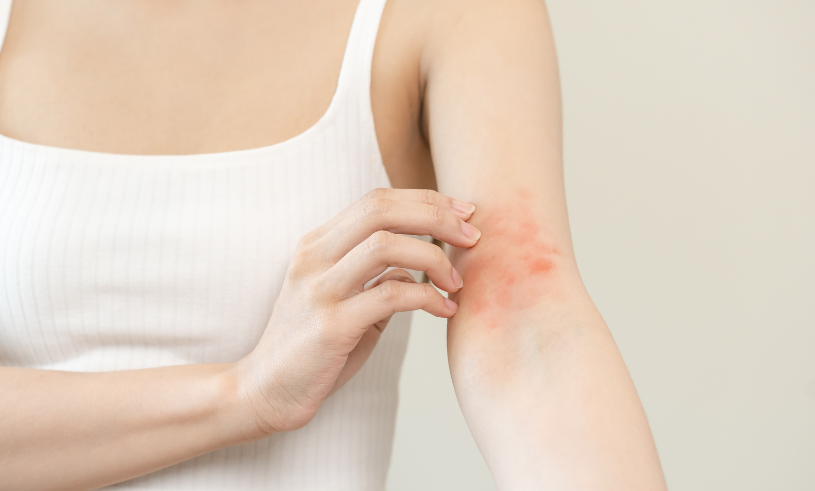Between two and ten percent of adults in Sweden suffer from atopic eczema, a skin disease that causes the skin to dry and peel. Here is a list of symptoms and treatments for atopic eczema.
Do you suffer from dry, scaly skin, itchy rashes and cracks in the skin? So you may be one of the many Swedes with atopic eczema.
What is atopic eczema?
Atopic eczema is a common type of eczema that affects both children and adults. This inflammatory skin disease, caused by a defect in the skin barrier, is becoming increasingly common in Sweden. Between 15 and 30 percent of Swedish children have the disease, while 2-10 percent of all adults do.
Atopic eczema: symptoms
The care guide lists the following symptoms of atopic eczema:
- The skin is dry and scaly.
- You get an itchy rash.
- On fair skin, the rash will be red. On darker skin, the areas affected by eczema may become darker than the rest of the skin.
- You get cracks in the skin that hurt you.
- The skin develops small blisters with fluid. The blisters may rupture until the fluid flows out. Then small wounds and scabs form.
In addition, eczema with wounds can become infected, as a result of which the wound fluid becomes cloudy and the crusts become thick and yellow. In areas of prolonged eczema that you’ve scratched, the skin can become thickened and wrinkled.
Atopic eczema in adults
Although atopic eczema is more common in children, it is something that affects adults as well. It’s often thought of as hand eczema, but you can also get eczema on the neck, face, around the eyes, and in wrinkles.
Atopic Eczema: Treatments and Tips
There are several things you can do to ease the discomfort:
- Try not to scratch the skin. Not only does itching cause more itching, but it also increases the risk of developing an eczema infection. If you find it hard to stop scratching, try keeping your nails short and patting or massaging the skin with lotion rather than tearing it.
- Lubricate regularly. Use moisturizing creams that prevent evaporation and lock in moisture. If you have mild problems, treat with emollient creams In addition to over-the-counter cortisone creams are enough to get relief from the discomfort, but there are also prescription treatments. A tip is to soften the skin even during periods when you don’t have problems – this can lead to longer periods when you don’t have problems.
- Protect the skin from drying out. Water – especially hot water – dries out the skin, so don’t shower or bathe every day unless absolutely necessary. Use a mild, unscented soap specially formulated for dry, sensitive skin, and don’t forget to lubricate the skin with a skin-moisturizing cream after bathing and showering.
Sources: Asthma and Allergy AssociationAnd the Care guide

“Extreme tv maven. Beer fanatic. Friendly bacon fan. Communicator. Wannabe travel expert.”







More Stories
Why Rare Earth Metals for Electric Cars Are Crucial for Modern Mobility
“We want to promote critical rules approach”
“A lot happened during the trip,” Jönköping County Council